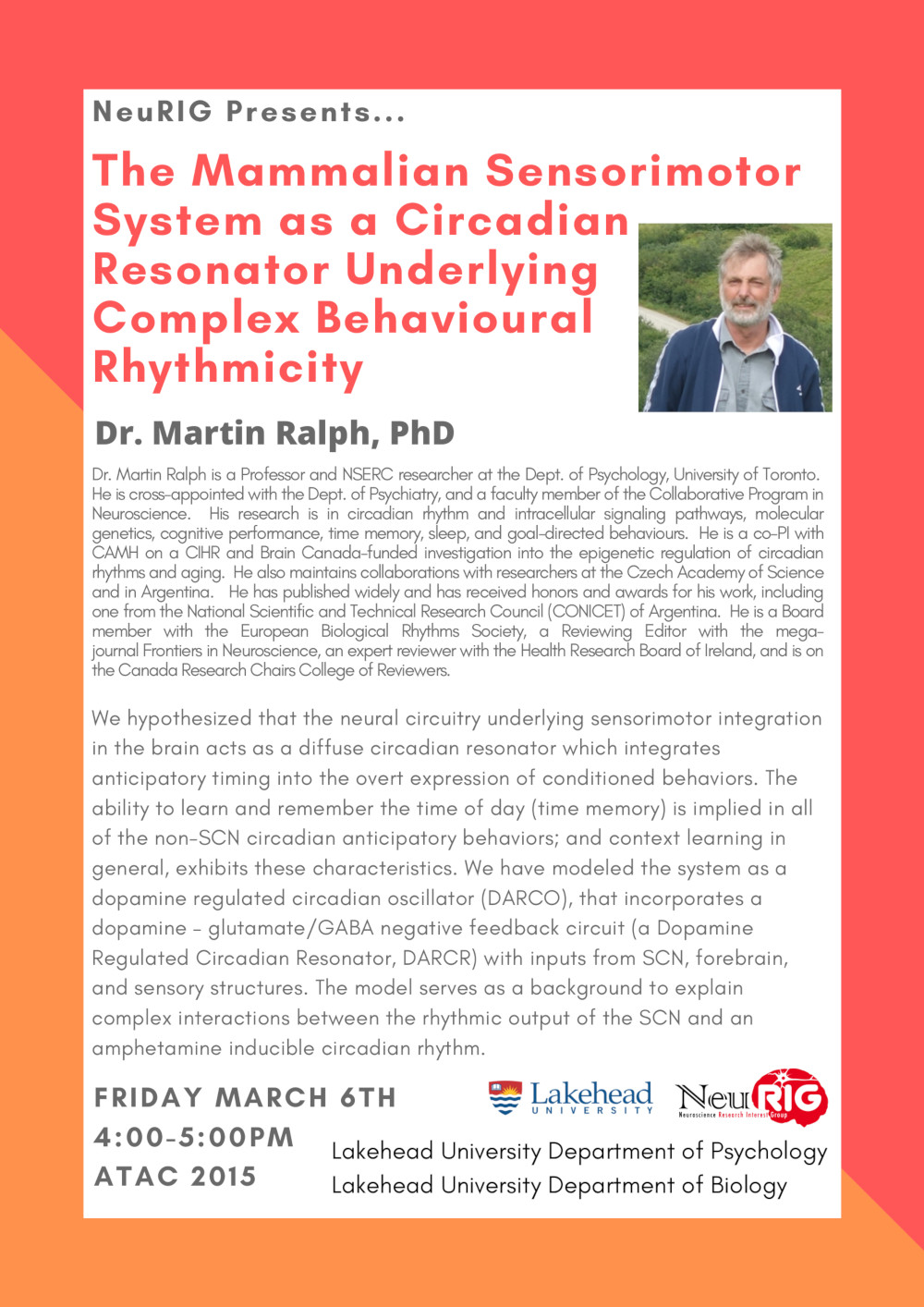NeuRIG Talk

The Mammalian Sensorimotor System as a Circadian Resonator Underlying Complex Behavioural Rhythmicity
Dr. Martin Ralph is a Professor and NSERC researcher at the Dept. of Psychology, University of Toronto. He is cross-appointed with the Dept. of Psychiatry, and a faculty member of the Collaborative Program in Neuroscience. His research is in circadian rhythm and intracellular signaling pathways, molecular genetics, cognitive performance, time memory, sleep, and goal-directed behaviours. He is a co-PI with CAMH on a CIHR and Brain Canada-funded investigation into the epigenetic regulation of circadian
rhythms and aging. He also maintains collaborations with researchers at the Czech Academy of Science and in Argentina. He has published widely and has received honors and awards for his work, including one from the National Scientific and Technical Research Council (CONICET) of Argentina. He is a Board member with the European Biological Rhythms Society, a Reviewing Editor with the megajournal Frontiers in Neuroscience, an expert reviewer with the Health Research Board of Ireland, and is on
the Canada Research Chairs College of Reviewers.
We hypothesized that the neural circuitry underlying sensorimotor integration in the brain acts as a diffuse circadian resonator which integrates anticipatory timing into the overt expression of conditioned behaviors. The ability to learn and remember the time of day (time memory) is implied in all of the non-SCN circadian anticipatory behaviors; and context learning in general, exhibits these characteristics. We have modeled the system as a dopamine regulated circadian oscillator (DARCO), that incorporates a
dopamine – glutamate/GABA negative feedback circuit (a Dopamine Regulated Circadian Resonator, DARCR) with inputs from SCN, forebrain, and sensory structures. The model serves as a background to explain complex interactions between the rhythmic output of the SCN and an amphetamine inducible circadian rhythm.

